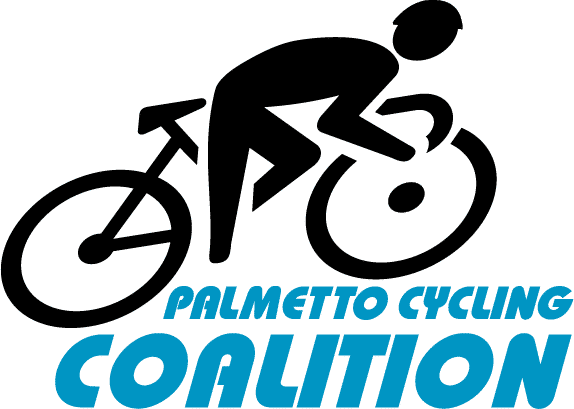Bicycle Parking Info
Rack ‘Em Up!
by Arthur Ross, for the Bicycle Federation of Wisconsin
Bicycle parking is an important facility need for bicyclists. Once we get to our destinations, we have to safely park and lock our bicycles while we are working, shopping, visiting, or playing there. There are several things that make good bicycle parking facilities. Where it is located, how much space is provided for each bicycle as well as for access around the rack and bicycles, and racks that are easy to use with a variety of locks and accessories.
Location, Location, Location
People like to park as close to their destinations as possible, whether parking a car or a bike. Placing bicycle parking close to entrances ensures that the parking will be found and used by bicyclists. And it helps prevent theft. Bicycle parking should be in a high traffic area where bicycle thieves have little time to work unobserved. Bike racks located behind fences or shrubs, or out back by the dumpster, give bike thieves cover and time to steal bicycles.
The design of a bicycle parking area is based on bicycle dimensions. The critical dimensions are bicycle width and length, and space behind the bicycle needed to get in and out of each space. Bicycle handlebars are 15 – 18 inches wide for road bikes, 20 – 24 inches for mountain bikes and hybrids. Overall bicycle length is about 68 inches. Thus, a minimum bicycle space 2 feet wide and 6 feet long is a minimum specification. A five-foot access aisle is also required.
Design with the Bicyclist in Mind
Unfortunately, few manufacturers build racks to appropriate dimensions. Here are some tips to help you determine if a particular rack will serve bicyclists well:
- Spaces at least 2 feet wide, or 2 feet center to center
- Simple, self-explanatory design
- Unobtrusive for other bicyclists or pedestrians
- Each space allows all types of locks, including U-shaped locks to lock bicycle frame and wheel(s) to the rack
- Spaces clearly designated for each bicycle. Confusion can lead to either fewer spaces being available as bicycles are loaded randomly into the rack, or crowding and difficulty getting bicycles out if users try to squeeze more bikes in than the rack is meant to hold.
The Good
“Inverted U” racks are a simple design, aesthetically pleasing, and can fit into limited spaces. The inverted-U rack is designed to park two bicycles, facing in opposite directions, parallel to the rack. Racks in a parallel series need to be 4 feet apart to provide adequate access to each bicycle. The major design concern with this type of rack is the length of the rack (the distance between the two verticals). Good inverted-U racks are a minimum of 30 inches long, with 36 inches preferred. At this length, two bicycles parked on opposite sides facing in opposite directions will not interfere with each other. Narrower inverted-U racks (18 – 24 inches ) will generally be used for one bike, not two. A nice addition is a horizontal bar across the inverted-U about 18 inches off the ground. This provides additional stability, as well as added flexibility in locking a bicycle to the rack. Height of the rack can be of concern as well. An overall height of about 30-32″ works well. A height of 36″ or more can interfere with handlebars.
The “post and ring” rack is used in a similar fashion as inverted-U racks. The ring is typically 18 inches in diameter. The bottom of the ring should be about 12″ off the ground. As with narrow inverted-U racks, this should be considered a one-bicycle rack.
The Ugly
The “fence” or “grid” style rack is one of the most commonly seen racks. These racks are unacceptable due to typically narrow spaces, 16 – 18 inches wide, and the fact that U-locks cannot be used effectively. Bicyclists will often use these racks by lifting the front wheel over the rack in order to use a U-lock. This can damage the bicycle frame and fork. Another common misuse of this rack is for a bicycle to be parked parallel to the rack, turning it into a one bike rack. This style of rack is also known for a tendency to bend wheels when a bicycle falls over.
The “wheel holder” is another common unacceptable rack type. This rack has many of the shortcomings of the fence style racks: typically narrow spacing and an inability to use U-locks. Some people will use this rack backwards in order to use a U-lock, but this will not work with some wider mountain bike tires, if the bicycle has fenders, or if the rack is located against a wall. This rack can also bend wheels.
“Wave” or “loop” racks are just pretty fence racks. Most have spaces 18 – 20 inches wide (verticals 9-10 inches apart). U-locks can be used for bicycles parked in the open top spaces, but not in the closed top spaces. Bicyclists can, and will, park parallel to this rack, as with the fence style rack. “Pedestal” style racks support the bicycle below its center of gravity, making bicycles prone to falling over. Many of these allow the rack to be locked, but not the bicycle. They may have holes large enough to fit a U-lock through, but the bicycle wheel and frame often cannot be locked directly to the rack with the U-lock.
Your license plate

